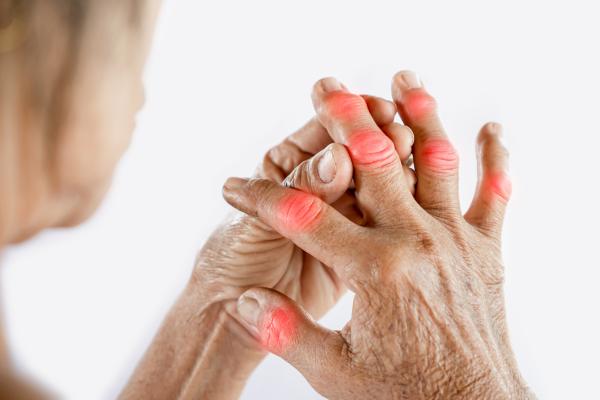IRP’s Lindsey Criswell Elected to National Academy of Medicine
Researcher Seeks Risk Factors for Autoimmune Disease

NIAMS Director and IRP adjunct investigator Lindsey Criswell was elected to the National Academy of Medicine (NAM) in 2024 for her contributions to our understanding of why our bodies’ defenses sometimes turn on us.
During the winter months, we all rely on our immune systems to keep us from catching a cold or the flu, or help us recover quickly if we do fall ill. However, sometimes the immune system itself is the source of our problems, producing one of dozens of ‘autoimmune’ conditions, some affecting specific organs and others affecting the entire body, with symptoms that range from irritating and uncomfortable to deadly. Even more alarming, while these ailments already affect as many as 50 million Americans, their prevalence is rising for reasons that remain unclear.
Lindsey A. Criswell, M.D., M.P.H., D.Sc., has spent her career investigating this mystery and tracking down the culprits behind autoimmune ailments, likely a complex network of genes and harmful environmental influences. Dr. Criswell, who is Director of NIH’s National Institute of Arthritis and Musculoskeletal and Skin Diseases (NIAMS) and an adjunct investigator in the National Human Genome Research Institute (NHGRI), was elected to the National Academy of Medicine in 2024 for her accomplishments in this area of research. Her work has identified dozens of genes involved in autoimmune diseases, as well as critical environmental factors that influence their risk and severity.
“What struck me as a medical intern was not only how devastating these diseases are for the individuals affected, but how little we knew about them,” Dr. Criswell remembers. “Our treatments were limited. Nothing cured the disease, so the best we could hope for was some decrease in symptoms. I became determined to devote my time and effort to understanding these diseases better so we could treat them better.”

Dr. Criswell is particularly interested in autoimmune ailments that affect the joints, muscles, skin, and other connective tissues.
Dr. Criswell has led international teams to uncover the drivers of a broad range of autoimmune diseases, particularly conditions that affect the joints, muscles, skin, and other connective tissues. Their detective work has led to the identification of dozens of genes, as well as key processes in the body, that influence the onset and progression of several autoimmune diseases, including lupus, rheumatoid arthritis, and Sjögren’s disease.
“What scientists have learned over the past couple of decades of work is that literally hundreds of genes can contribute to autoimmune disorders, each one typically contributing a minor amount to risk overall, but collectively they have a very important influence on who gets the disease,” Dr. Criswell says.
These genes work together like an intricate machine, creating proteins, sending signals, turning other genes on and off, and setting off a biochemical chain of events that produces autoimmune symptoms. Like cops at checkpoints along an escape route, at each step along the chain, there’s an opportunity for another gene or protein, chemical or drug, or environmental exposure to cause a disruption and set off a new series of reactions. The many factors involved make autoimmune diseases extremely variable in their presentations, and hence even tougher to treat.
“One of the fascinating things about these diseases is they look different in every person who gets them,” Dr. Criswell says. “No two lupus patients look exactly the same, for example.”

Clarifying the complex causal chain that produces autoimmune symptoms can lead to the discovery of possible intervention points that can help patients.
In the case of lupus, one set of genes might determine whether a person will get lupus, but another set of genes may affect whether lupus affects the kidneys. If the biochemical chain of events that leads to kidney-related symptoms differs from the one that causes symptoms affecting other organs, different treatments may be needed to address those symptoms. This can be very helpful in customizing treatment approaches, rather than using trial and error.
“If we had a better way to figure it out up front, based on a person’s genetic profile and other health information, we could predict whether they are likely to have severe disease or kidney involvement,” Dr. Criswell says. “We’re a long way from being able to do that, but it’s the goal and we’re making progress.”
One contributing factor Dr. Criswell’s research team is exploring is the role of sex and ancestry in determining risk. For instance, 90 percent of people who get lupus or Sjögren’s are women. In rheumatoid arthritis, women are still more likely to get the disease, but the difference is not as striking. At the same time, individuals of European ancestry have the lowest risk of lupus compared with pretty much any other population in the world.
“What’s interesting is that this is not a pattern that holds across all systemic autoimmune diseases,” Dr. Criswell says. “We’ve done work for many years trying to get an explanation and understand how much of the difference is due to genetics versus socioeconomic factors, access to care, and the like.”
Indeed, both inherent genetic factors and external environmental ones can influence someone’s experience with autoimmune symptoms. Some of those environmental influences can actually change the way genes behave via a process known as ‘epigenetics.’ For instance, Dr. Criswell’s research team has focused recently on a type of DNA modification called DNA methylation, where chemical tags called ‘methyl groups’ are attached to molecules in the DNA chain, causing genes to turn on or off. Her lab continues to explore how environmental factors like pollution, diet, and exposure to infectious microbes affect autoimmune ailments via that process of DNA methylation.

Environmental factors like exposure to air pollution interact with genetic factors to produce autoimmune symptoms.
Fortunately, scientists’ ability to tease out the many potential disease triggers has gotten a big boost as new tools become available. For instance, ‘exposomics’ is a new field of study that looks at a person’s lifetime environmental exposures and how they relate to health. Using a blood sample, it’s now possible to analyze thousands of chemical components people have been exposed to over their lives and then compare them in patients with and without specific autoimmune conditions.
“This sort of profiling holds a lot of promise and is being applied to autoimmune and other diseases where we know there’s an important but yet-to-be-defined environmental contribution,” Dr. Criswell says. “In the past decades, we are all increasingly exposed to many chemicals, and we don’t fully understand the biological implications for our health. It’s important to develop ways to study the environment we’re living in now.”
“We’ve made a lot of progress, and I’m gratified to see that, but there’s more work to be done,” she adds. “I’m excited to continue working on the problem.”
Subscribe to our weekly newsletter to stay up-to-date on the latest breakthroughs in the NIH Intramural Research Program.
Related Blog Posts
This page was last updated on Wednesday, January 15, 2025
